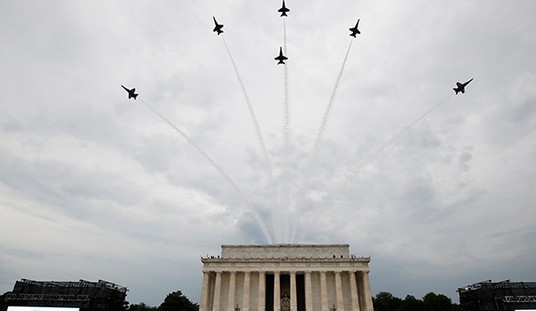I picked on the Washington Post’s reporting earlier today, so let’s give them some credit for digging into the Solyndra mess and finding a disturbing new twist. As the solar-tech company began to collapse, the Department of Energy had ample warning of the unfolding disaster. Did they take steps to protect taxpayer funds? Not only is the answer to that a resounding no, but even armed with this knowledge, Energy officials were making very misleading public statements about Solyndra’s financial situation:
At a number of points in its troubled history, the solar company Solyndra faced dire financial problems that threatened its survival. Yet at each crisis, Energy Secretary Steven Chu and officials at his agency failed to take steps that critics say could have limited taxpayer losses when the company collapsed last summer.
Instead, Energy Department officials monitoring the solar panel manufacturer and its $535 million federal loan stepped in with financial assistance, or worked to dispel concerns raised by industry analysts and other Obama administration staffers, according to previously confidential documents analyzed by The Washington Post.
As Joe Stephens and Carol Leonnig report, this went beyond just remaining silent while Solyndra executives misled Congress this summer on their impending collapse. DoE officials went out and made statements testifying to the health of Solyndra even while the DoE knew they were about to go under:
By Aug. 9, with Solyndra weeks away from a bankruptcy filing, OMB career staff mocked supportive comments offered by Jonathan Silver, then the head of Energy’s loan program. Silver had been quoted in an article saying that Solyndra was “significantly misunderstood” and experiencing the normal “bumps in the road” for a startup company.
“Wow . . . I wonder if he was unaware of the true situation at Solyndra, or if he was trying to salvage something by showing DOE confidence,” an OMB staffer wrote in one e-mail.
If Silver was ignorant of Solyndra’s dire straits, it would only have been if he hadn’t consulted his own staff — and if so, then Silver had no business commenting on the situation at all. If Silver had been consulting his staff on the situation, then he was deliberately misleading not just internal auditors but the whole investment community. The only way Solyndra was going to get rescued was through rescue investment, which by that time Silver knew through personal experience from more than a year earlier.
In July 2010, Silver assured the OMB that Solyndra was “on time and on budget.” Less than a week later, Solyndra changed CEOs, and three months later, Solyndra told DoE that it needed emergency funding to keep operating. Two months after that, they missed a scheduled $5 million security payment, which violated the conditions of the loan. That’s when DoE arranged for George Kaiser and other investors to put in another $75 million — and agreed to break the law by subordinating taxpayer investment to the new tranche from Kaiser and his team.
Did Silver and Chu learn their lesson and stop blowing sunshine up the public’s skirt? Not at all. By April 2011, Chu told the media that Solyndra’s sales were “growing” and that he was “confident” in their long-term prospects. Meanwhile, Silver told the media in April that Solyndra was “going in the right direction” and that they had doubled their revenues in each of the last two years. Unfortunately, the DoE already knew that was false. Sales had remained flat, and Solyndra products were selling at a loss anyway. A White House memo uncovered by Stephens and Leonnig shows that the administration was aware that Solyndra had “0 percent sales growth since [the fall of] 2009.”o
In other words, Silver and Chu lied about Solyndra’s finances. They certainly had a political motivation to make Solyndra look good, as the political fallout following the collapse has proven already. But they also had another motive, tied to that political desperation, which was to find new investors to extend Solyndra’s liquidity to avoid the collapse. By becoming Solyndra cheerleaders in the media, Chu and Silver engaged in a pattern of deception that would have led people to invest in a firm they knew was rapidly approaching collapse.
If company executives in less-politically-connected firms issued those kinds of false statements about their fiscal health, they might well face criminal prosecution. Maybe it’s time to look at whether Chu and Silver should be facing the wrong end of a grand jury probe in Solyndra.
Update: I meant that Solyndra’s products were selling at a loss. I’ve made that more clear.








Join the conversation as a VIP Member